Discover 11 hidden attractions, cool sights, and unusual things to do in Petersfield (United Kingdom). Don't miss out on these must-see attractions: Uppark, Buriton Chalk Pit, and Petersfield Museum. Also, be sure to include Flora Twort Gallery in your itinerary.
Below, you can find the list of the most amazing places you should visit in Petersfield (England).
Table of Contents
Uppark
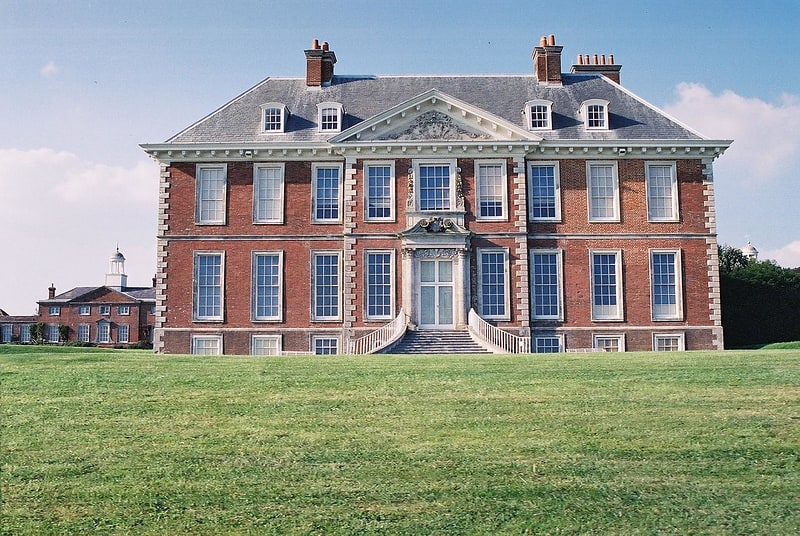
Building in England. Uppark is a 17th-century house in South Harting, West Sussex, England. It is a Grade I listed building and a National Trust property.[1]
Address: South Harting, GU31 5QR Petersfield
Buriton Chalk Pit
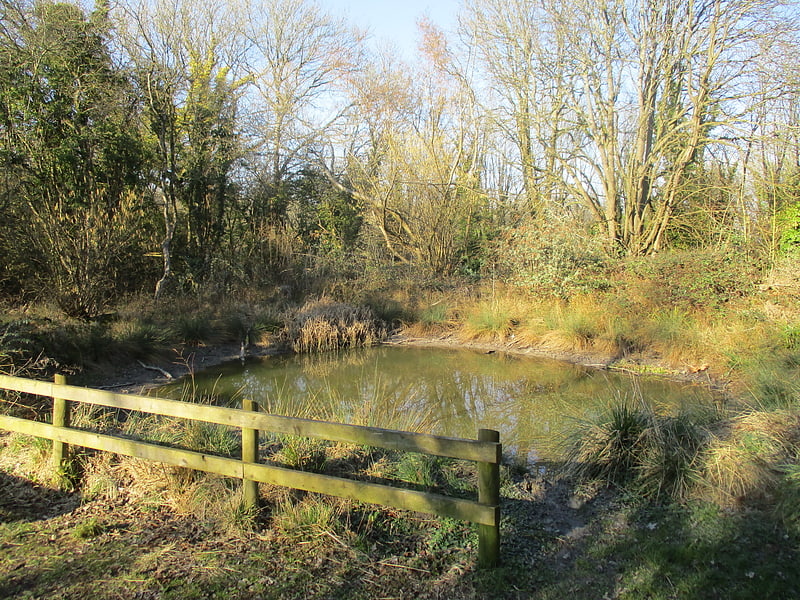
Buriton Chalk Pit is a 5.7-hectare Local Nature Reserve near Buriton in Hampshire. It is owned by East Hampshire District Council and managed by Hampshire Countryside Service.
This former chalk quarry was worked up to the end of World War II and it still has large heaps of spoil. It has gradually developed into a rich habitat with chalk loving plants. Many paths follow the routes of narrow gauge railway lines which were used to move chalk and lime.[2]
Petersfield Museum

Museum in Petersfield, England. Petersfield Museum is a local museum in the small town of Petersfield in Hampshire, England. Petersfield Museum Limited is a registered charity.[3]
Address: The Old Courthouse St. Peters Road, GU32 3HX Petersfield
Flora Twort Gallery
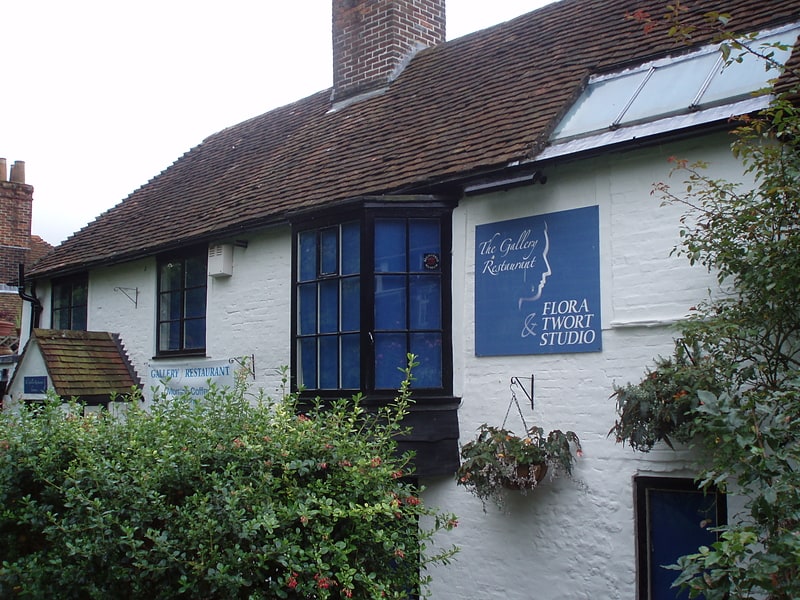
Museum in Petersfield, England. Petersfield Museum is a local museum in the small town of Petersfield in Hampshire, England. Petersfield Museum Limited is a registered charity.[4]
Address: St Peter's Rd, GU32 3HX Petersfield
St Peter's Church
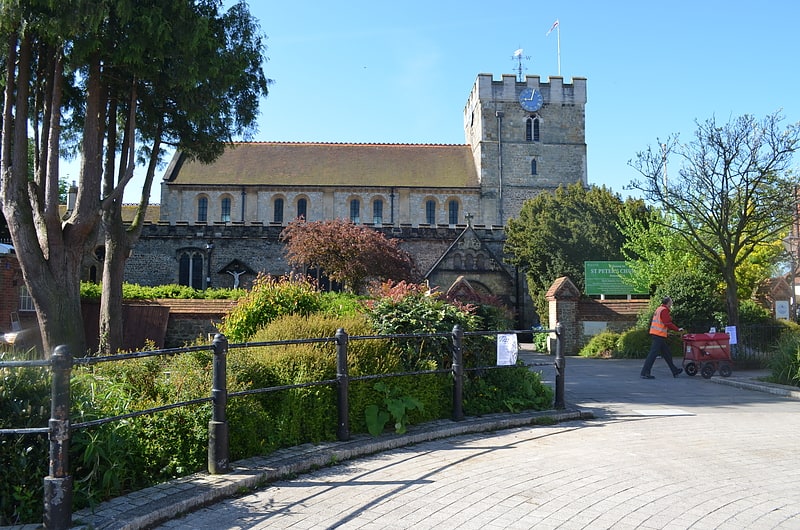
Church in Petersfield, England. St Peter's Church is the Anglican parish church in Petersfield, Hampshire, England. It is within the Diocese of Portsmouth. The ancient church, a Grade I listed building, is located in the centre of the town, on the south side of the Square. The architect Nikolaus Pevsner described it as "one of the most interesting churches in Hampshire",[5]
Address: The Square, Petersfield
Vandalian Tower
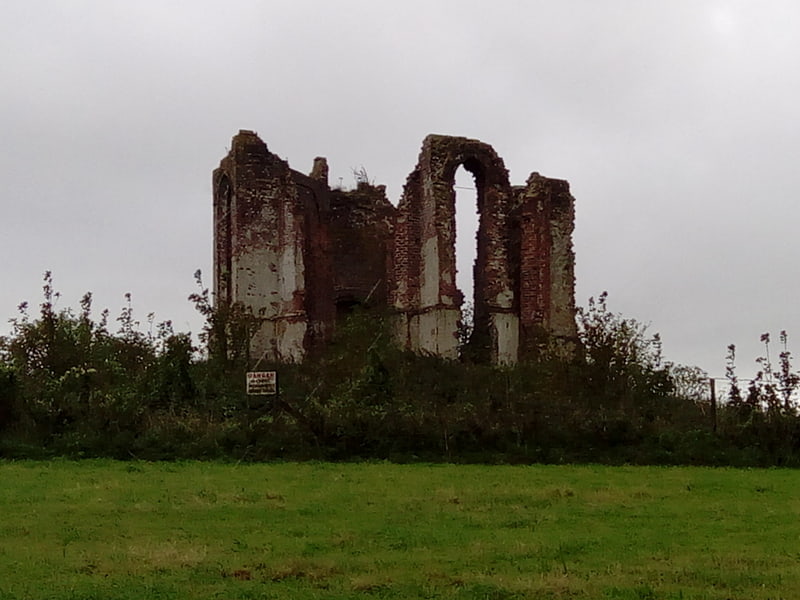
The Vandalian Tower at Harting, West Sussex, England, is an 18th-century folly, built to commemorate the British colony of Vandalia, a short-lived colony that disappeared with the spread of America. It sits on the summit of Tower Hill.
Today the ruin is owned by the descendants of the Fetherstonhaugh family who bought the neighbouring estate of Uppark, now owned by the National Trust. It was listed as a scheduled monument in 1976.[6]
Oxenbourne Down

Nature reserve. Oxenbourne Down, Clanfield is a 84.8-hectare Local Nature Reserve north of Clanfield in Hampshire. It is owned and managed by Hampshire County Council. It is part of Butser Hill, which is a Special Area of Conservation and Site of Special Scientific Interest.
This is part of Queen Elizabeth Country Park. It has unimproved grassland on low fertility soils, which is controlled by grazing. There are also areas of ancient semi-natural woodland.[7]
Harting Downs
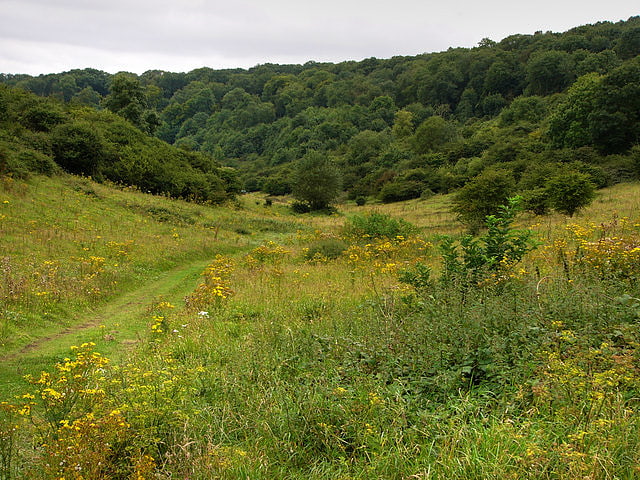
Harting Downs is a 336.3-hectare biological Site of Special Scientific Interest west of Midhurst in West Sussex. It is a Nature Conservation Review site, Grade I and an area of 206.6 hectares is a Local Nature Reserve which is owned and managed by the National Trust.
This site consists of several parallel valleys on the steep slope of the South Downs. Habitats are chalk grassland, which is being invaded by scrub, together with areas of long-established woodland. The site is important for insects, with a nationally rare snail, Helicondonta obvoluta, two uncommon moths, the wood tiger and the maple prominent, and many rove beetles.[8]
West Harting Down SSSI
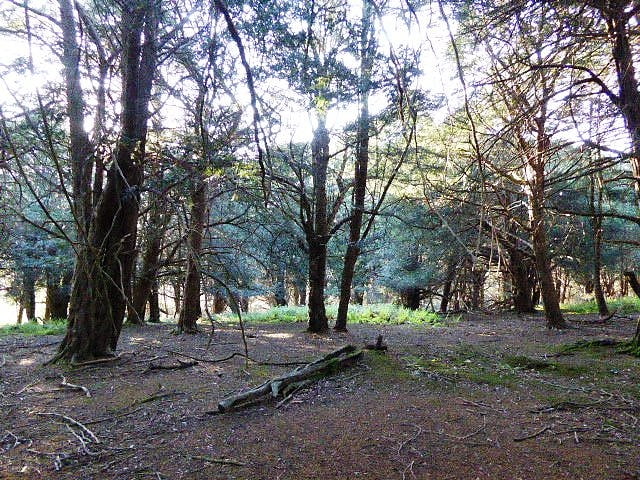
West Harting Down SSSI is a 13.9-hectare biological Site of Special Scientific Interest west of South Harting in West Sussex. It is part of the 317.9-hectare West Harting Down, which is managed by Forestry England.
This is mainly mature yew forest on the chalk of the South Downs. There are also areas of chalk grassland with flora such as rock rose, carnation sedge, perforate St John’s wort and salad burnet, with grasses such as red fescue, tor-grass and common bent.
The Sussex Border Path runs through West Harting Down close to the SSSI.[9]
Pads Wood

Pads Wood is a 22.2-hectare biological Site of Special Scientific Interest west of Midhurst in West Sussex.
This ancient coppiced wood is mainly hazel and sweet chestnut with pedunculate oak and ash standards. The site has a rich lichen flora, most of which are epiphytic on the oak and ash standards, and a woodland ride has a rich display of flowering plants.
The site is private land with no public access.[10]
Coulters Dean

Coulters Dean is a 2.2-hectare biological Site of Special Scientific Interest south-east of Buriton in Hampshire. It is part of the 4-hectare Coulters Dean nature reserve, which is managed by the Hampshire and Isle of Wight Wildlife Trust.
This is chalk grassland on a west facing slope of the South Downs. It has a rich flora and invertebrate fauna, which has been recorded periodically since 1914. Flowering plants include horseshoe vetch, rampion, clustered bellflower and at least eleven species of orchid.[11]